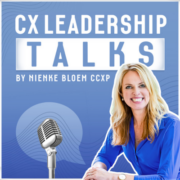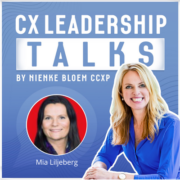This is how to handle customer surveys properly - CX lessons learned from TESO
As CX professionals, we often send out customer surveys. Or maybe we don't even send them, but we use the content for customer insights or reporting. Or to learn from it where we can improve our customer journeys.
I know a lot of CX professionals aren't responsible for closing the loop. That's a shame because it's actually a very important part of CX. You can really impact customer experiences and make a difference in your customers' lives. This is exactly where too many companies go wrong. So, if you do it right, you'll stand out from the crowd.
Lessons to be learned and actions to be taken:
A. The Strategic Lens:
- Responsibility. Find out who is responsible for closing the loop. If no one is responsible, make sure you discuss this and arrange responsibility.
- Leadership engagement. Align leadership on the topic. Does management think it's acceptable for you not to respond to surveys or reviews? Let them put it to the test themselves, so that they can experience for themselves how your company deals with feedback. That's how you create the buy-in you need.
- Future experiences. Determine how closing the loop fits in with your company's strategic goals and how you want to act on them. Are there certain customer segments that you do or don't want to respond to? Do you focus on transforming detractors into neutrals, or neutrals into promoters? Use your strategic lens and have those valuable conversations.
- Business case: Yes, you have to calculate what it will cost to be able to process all the feedback. Or start a pilot first to see what the impact is, so that you can calculate the ROI later.
B. The Tactical Lens:
- Why – Clearly describe why you do what you do. This way, you can explain to the team members how closing the loop fits into the company's strategy. What the benefits are. What went wrong in the past. How this will contribute to the future.
- Who – Who is actually going to take action based on the feedback? Is it the webcare team or the customer contact centre? Schedule time and, if necessary, have a conversation with HR about workers to be deployed. The who is often ignored. But also think about the who in customers. Is it the zeros and ones that you come back to? The neutrals? Or just the people who complain? Make it very specific.
- What – Describe what you need to do. Maybe a short script is needed. Always apologize, fix the problem, and go the extra mile. What kind of small gift can your colleagues give? Help them by outlining a framework about what you expect from them. Arrange for them to log into the CRM system.
- When – Do you call the customer the day after the feedback? Do you do that in the morning? How often do you try? But do you also have to report on progress? Describe everything, so that you organize it well in the long run.
C. The Operational Lens:
This is simply about implementation: concrete action. Calling customers. Troubleshooting. Celebrating successes. Involve others.
I suggest you think big and start small. Choose a pilot project. Experiment. In the long run, this will lead to your great success.
At the ferry service, they gave feedback their primary focus (I checked that afterwards). Employees have been trained to deal with feedback and have turned it into a game. They prided themselves on being able to solve problems and contact customers. They arranged it and acted accordingly. As a customer, I felt the same way. Now it's up to you to do the same!
Want to make sure you don't miss any more CX classes? Then sign up for my monthly CX Greetz, in which I share many CX experiences, inspiration and lessons with you.
*****
Nienke Bloem is often called the Customer Experience speaker in the blue dress.
She's a global CX thought leader, educator and a global keynote speaker who inspires audiences with best practices and proven methodologies. She leads a speaking practice, a CX game company and a training business; she breathes Customer Experiences and is author of two CX books.
Her two-day Customer Experience Masterclass is known as the best program to prepare for your CCXP and she is the go-to person for CX leaders who want to advance their leadership and bring direct results from their Customer Experience transformation programs. Since 2020, she hosts a CX Leadership Masterminds program and helps leaders spice up their leadership and deliver an engaging CX Story including a solid CX Strategy. Besides, she is a modern-day pilgrim and found the parallel with leading customer centric transformations.
With her over 20 years of corporate experience, she speaks the business language. Her keynotes and education programs in Customer Experience are inspiring and hands-on. She is one of the few Recognized Training Partners of the CXPA and it is her mission to Make Customer Experience Work and help you deliver business results.









